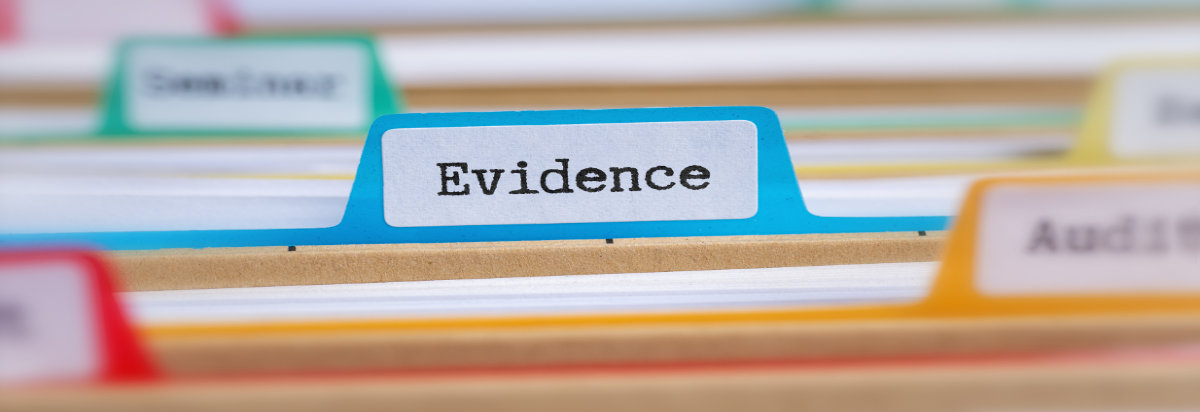Jump to:
- Four Types of Essential Personal Evidence
- How to Document Your Experience
- Find a Personal Injury Lawyer Today
When you’re injured due to someone else’s negligence, it’s critical to document and preserve evidence from the accident. While it’s a great idea to contact an experienced legal team to get advice on the collection process, you should begin gathering and organizing everything tied to your case as soon as possible.
What steps can you take to get ahead of your personal injury case? Read on to learn about different types of evidence you can collect and how to preserve it.
What Type of Personal Injury Evidence Do You Need?
Collecting evidence quickly and efficiently is vital to a successful case. The scene of your injury will change, making it more difficult to prove the at-fault party’s negligence as time passes. A trusted individual should remain at the scene or return as quickly as possible to collect evidence.
Here are five types of evidence you should consider and look for:
#1. Video and photography
Video and photography can show where the accident happened, how it occurred and its severity. Humans are visual creatures. Our brains process visual data 60,000 times faster than text or any other type of information. Visual evidence is also more likely to remain in the minds of a judge or jury when deciding a final verdict.
Taking several high-quality photos of the scene and your injury is essential. In most instances, a smartphone camera can produce images and video with sufficient detail. Here are a few quick tips for photos and video that can help you make the most of this medium:
Capture the site of the accident from multiple angles.
You want to find every vantage point possible whenever you return to the accident site. A few examples of different angles include:
- A close-up of the cause of your accident, such as the at-fault vehicle, a broken step or a low-hanging branch
- Your point of view before the accident occurred
- A bird’s eye view or a comprehensive look
Visit the scene around the same time your accident occurred.
While it can be challenging to recreate the exact circumstances of your accident, it’s a good idea to go at a similar time of day to capture the lighting, traffic and other conditions that may have influenced your injury.
Create a visual record of your injury over time.
Take images of your injury from its inception throughout your recovery. You want to capture the severity of your injury and the long recovery process.
As you take photos and videos, turn on your time stamp feature. If you print images, keep your receipt from the printer to show the date you collected the photos.
#2. Physical items from the accident
Physical items from your injury, like torn clothing and broken personal belongings, can be a powerful way to demonstrate the severity of your accident. When preserving articles, keep them airtight and temperature-controlled before giving them to your personal injury lawyer for assistance. Use a clean, re-sealable storage bag and label it.
Some physical evidence cannot be collected or preserved. Some objects are too large to stow away, and some are impossible to remove from the site. Don’t take something from the accident scene that belongs to another party without permission. If you can’t preserve physical evidence, take a photograph or video.
#3. Witness statements
Witness testimony can be invaluable when presenting your case. Whether the witness saw or heard your accident, they can help set the scene. Gathering witness contact information and their statement as soon as possible is critical.
Research has shown that we quickly forget new information presented to us. Memories can soon become dull and difficult to retrieve. Try to record or write down any witness statements within 24-48 hours of the accident while the memory is still fresh.
#4. Medical records and other documentation
Medical records verify the existence of your injury and can help establish a link between your injuries and the incident that caused them. Be sure to describe in detail how your injury occurred so your physician can document that in your record. A personal injury lawyer can access these records with your medical authorization. It’s also a great idea to keep receipts of any injury-related expenses.
If you have a physical copy of any document about your injury, store it in a catch-all file for any printed materials you want to present to your attorney. Like physical items from the accident, keeping printed documents and images in a climate-controlled space is smart to preserve their integrity.
Documenting Your Experience
Try to document your experience throughout the duration of your injury. Start by writing down the events that led to your accident. After this, a regular journal entry with symptoms you’ve experienced, your pain level and limitations from daily activity can go a long way in keeping your injury history organized. While an excellent legal team will do everything possible to help collect evidence on your behalf, building your case begins with you.
Find a Personal Injury Lawyer Who Can Help You Maximize Your Compensation
If you’ve experienced an injury due to no fault of your own, don’t try to tough it out or settle for a poor offer. Find a legal team to help you get the compensation you deserve to recover from your injury. The staff at Eng & Woods Attorneys at Law has handled a wide array of cases and has helped recover millions of dollars in settlements and favorable rulings.
Visit our contact page to call or fill out a contact form to get started.












